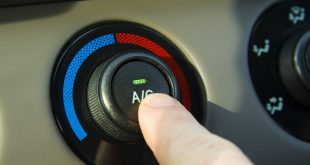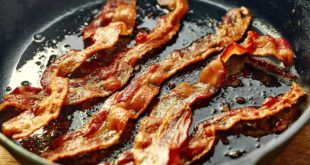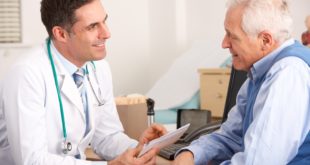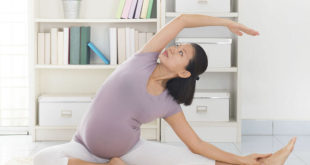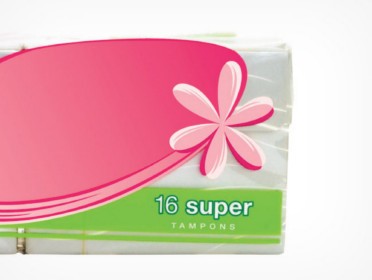
About one in three women experience heavy bleeding when they have their period.
Researchers at the Royal Women’s Hospital in Melbourne have now been given a $500,000 National Health and Medical Research Council grant to help find new ways to manage the problem. “This is a serious condition that affects about a third of women of reproductive age,” says Martha Hickey, a professor of obstetrics and gynaecology at the University of Melbourne. “Our aim is to develop a better understanding of the condition and develop new therapies to counter the problem which, in many cases, causes anxiety, stress and social isolation.”
Many women bleed heavily every month and just put up with it, says Dr Elizabeth Farrell, a gynaecologist and founding director of Jean Hailes For Women’s Health.
“Women often treat heavy menstrual bleeding like period pain. They think it’s how things are,” Farrell says. “But it has a significant impact on quality of life. Some women don’t leave home when they have a period because they’re worried about having an ‘accident’. It can be very distressing and I’d encourage them to find out what help is available.”
What is normal?
During an average period, women lose two to three tablespoons of blood, says Jill Michelson, director of clinical services at Marie Stopes International Australia.
“Signs of heavier-than-normal bleeding are if you soak through a pad or tampon every hour for several consecutive hours, or if your period usually lasts more than seven days,” Michelson says. “Soaking through a pad in the middle of the night is also an indication of heavy bleeding because usually, when we sleep, bleeding slows.”
Passing large blood clots or using double sanitary pads are also signs of heavy flow.
Common causes
“In a young girl, heavy bleeding can be due to the fact that she’s not ovulating on a regular basis,” Farrell says. The hormones oestrogen and progesterone control the uterus lining, the endometrium, which is shed during a period. A hormonal imbalance causes it to build up so, when it is eventually shed, bleeding is heavier. Hormonal therapy for one or two years may help.
For women in their 20s and 30s, heavy menstrual bleeding can be a result of polycystic ovarian syndrome (PCOS), endometriosis or fibroids.
Some sexually transmitted infections (STIs), such as chlamydia andgonorrhea, are also linked to heavy bleeding, Michelson says. “Younger women can experience pelvic inflammatory disease due to an STI. This can cause severe lower abdominal pain and heavy bleeding.”
Once the STI is cleared, the pelvic inflammatory disease and heavy bleeding usually subside.
PCOS affects five to 10 per cent of women of reproductive age and can lead to heavy periods as well as acne and excess facial or body hair. Farrell says the contraceptive pill can help manage bleeding.
Endometriosis affects about 10 per cent of women. It occurs when the endometrium is found outside the uterus, most often on the ovaries or in the pelvic lining. It may need to be removed surgically.
Fibroids, benign uterine growths, are more common in midlife. They can stretch the endometrial cavity, so during a period there is a larger surface area to bleed. Farrell says the fibroids themselves can have large blood vessels on their surface that bleed, too.
Heavy bleeding can also be due to small, benign polyps that grow on the lining of the uterus. Both fibroids and polyps can be removed.
Women can also have heavy periods in their 40s due to adenomyosis – where glands from the endometrium are embedded in the uterus muscles, causing heavy bleeding and cramps. An intrauterine device (IUD) helps by releasing a hormone to thin the lining.
Helping yourself
If you have heavy periods you may need an iron supplement, as blood loss can lead to low iron levels.
“Always keep sanitary items on you and use a heat pack to help relieve abdominal pain and cramps,” Michelson says. “Over-the-counter non-steroidal analgesics can also help, but you don’t have to put up with heavy bleeding each month. You can get help.”
“The flow was so heavy, wearing a pad or tampon was pointless” – Kate Stevenson, 24.
“I got my first period when I was 12. It wasn’t heavy at first, only six months later. It would last six to seven days. It was never regular, but I always knew when it was coming. I would crave bad food, sleep in the middle of the day and my moods were terrible.
“Occasionally, on my first or second day, the flow was so heavy wearing a pad or tampon was pointless. My mum had to make me a homemade pad – a piece of thick linen folded three times – as it was thicker than a sanitary pad.
“On the third and fourth day there was less blood, but I still had to wear both a tampon and pad and change them every hour or two. I would wake up in the morning with blood on my sheets, so sometimes I slept on a towel.
“I had immobilising cramps almost every period and nausea half a day before.
“It started to affect my education because every month I was having three to four days off school. It also affected my self-esteem; I would stand up in class and there would be blood everywhere. I was also anaemic and had to take iron tablets.
“I spoke to a doctor in April last year about different treatment options. I tried eight different contraceptive pills until I found one that helped my symptoms and I had an IUD inserted.
“I manage my periods much better these days. Talking to my doctor definitely helped.”

 We are sharing information for knowledge. Presented by. SocialDiary.Net
We are sharing information for knowledge. Presented by. SocialDiary.Net
